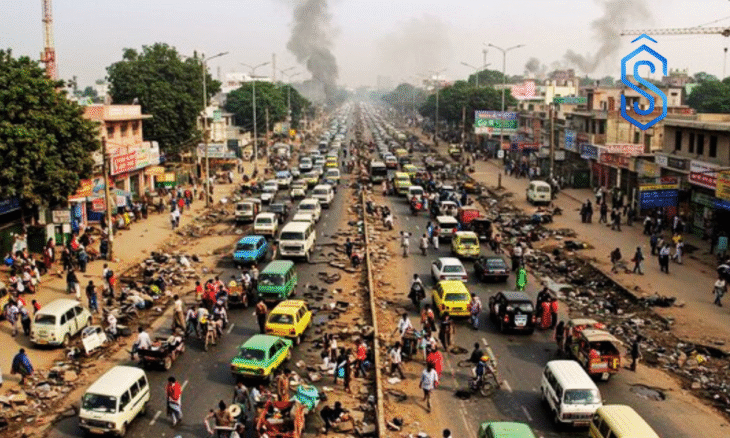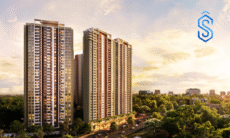Many Indian cities like Pune and Mumbai face a perfect storm – weak municipal governance, half-implemented master plans, and an unchecked real-estate boom. These forces hollow out civic infrastructure, create chronic shortages of water, green spaces, and affordable housing. A closer look at Pune- and parallel failures in Mumbai, Bengaluru, Chennai, and Delhi – reveals how this vicious cycle works, and how it can be broken.
Pune – Master-Plan Meltdown
Pune’s 1987 Development Plan (DP) set aside 609 land reservations for schools, hospitals, parks, roads, and other civic amenities. Twenty-five years later, the Pune Municipal Corporation (PMC) had developed only 134 barely 22% – while 22 sites were de-reserved altogether.
New suburbs added in 2017 still await statutory plans, leaving 45 fringe villages to grow with no formal infrastructure pipeline. Most new suburbs added into the Pune Municipal Corporation limits since 2017 still await statutory plans, and multiple fringe villages still don’t have even a vestige of basic infrastructure.
Also Read: Blockchain for Governance: STPI Hosts Workshop to Advance Public Sector Innovation
The Smart-City status was supposed to correct the course. Instead, delays, funding gaps, and disputed priorities have reduced Pune’s Smart City programme to a patchwork of half-finished projects while core needs such as mass transit, river clean-up, and slum rehabilitation remain stalled.
How Municipal Neglect Is Destroying India’s Cities
The Mahalunge-Maan Town Planning Scheme- the region’s flagship ‘hi-tech city’ – was launched in 2017. Seven years on, flood-line errors, litigation, and a lapsed contractor have left 250 hectares of half-built towers surrounded by dirt tracks, tanker water, and construction debris. Legally RERA-approved buildings now stand in an officially ‘unapproved’ city – or, as planners it, approved projects in an unapproved area.
Housing – When Profit Trumps People
Luxury towers sprout where land is cheapest to grab infrastructure-free profits. Public land reserves for low-income housing remain unbuilt; 42% of Mumbai’s population lives in just 8% of the city’s area.
Previously serene Pune municipal suburbs such as Baner, Kalyani Nagar, and NIBM Road have seen bungalows flipped into restaurants, tuition centres, and hostels without parking, fire access, or waste systems, turning residential lanes into 24×7 traffic corridors.
Meanwhile, developers market ‘affordable’ homes but charge premiums for scarce basic services – tanker water, private shuttle buses, diesel generators – raising real household costs far beyond the advertised sale price.
Governance Vacuum
In Pune, three years without elected corporators left the city’s residents chasing departmental signatures for streetlights and pothole repairs. With no general body, municipal corporation budget oversight has vanished, and project slippages have multiplied. As a result, there are bureaucratic bottlenecks for routine civic issues and unrelenting project delays across the city. Similar voids exist in Bengaluru and Chennai.
I recall a statement by veteran architect Christopher Benninger, who called Pune’s chaos “a deliberate strategy to run the metro region as a cluster of feudal fiefdoms” so that land-use can be tweaked opportunistically for private gain.
Also Read: Economist Dr Vijay Kelkar Calls for GST Reform
Nationally, 39% of state capitals lack an active master plan. Where plans exist, they are routinely spot-modified- plots are de-reserved within months of municipal notification to monetize land before public scrutiny.
Can anything be done to save the day? Theoretically, yes – but it requires massive determination. Let’s look at what some other cities in the rest of the world did:
- In Copenhagen, 75% of citizen trips are by foot, cycle, or public transit after integrating metro with bicycle super-highways – proving compact planning reduces congestion and emissions.
- Milan’s 15-Minute City: Post-pandemic, the city added 35 km of cycle lanes, cutting car trips by 30%.
- Tokyo Compact City: High-density mixed-use zoning plus efficient rail keeps average commute times under 45 minutes despite 37 million residents.
India will house 600 million urban residents by 2030. A do-nothing path means escalating water wars, public-health emergencies, and economic drag. The alternative is a people-centric, ecologically anchored, and transparently governed urban renaissance. We have already examples of a better urban model in integrated townships, where infrastructure is well-thought-out, green spaces are preserved, and commercial and residential spaces coexist harmoniously.
But the challenge is to bring in such harmony at a city level. It is a monumental task given the decades of damage and neglect that have already passed – and it requires far more political will than we have seen to date.
The choice is between cities that suffocate under concrete and infrastructure deadlock, and liveable, resilient, and inclusive municipal urban areas that are actually a joy to live in and also fuel our nation’s prosperity. We have to decide now.










